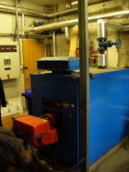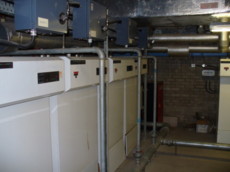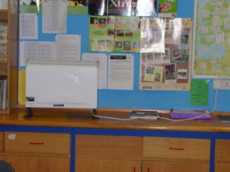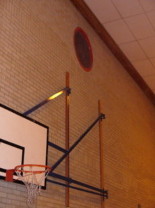
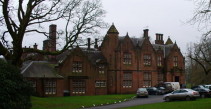
Barony College- Current Heating System
Introduction
At present, the main buildings at Barony College are heated by three separate heating systems. An oil burning system heats the original building, Kirk Michael House, while an electric boiler system heats the newer teaching block. Finally, there is a separate electric system which supplies heat to the games hall.
Furthermore, it is controlled by modem from a central facility 10 miles away in the town of Dumfries with Barony College having no way of altering the settings on-site. This is exacerbated by the fact that the building housing the central control is no longer a council office. Clearly this situation is far from ideal in terms of providing adequate independence for the college in terms of heating control.
The final significant problem with the system is one of reliability. Of the seven boilers, five have to be in operation for demand to be met and this has become increasingly difficult as reliability problems have led to only five of the seven being available at any one time. This is in part due to the rarity of the system meaning that spare parts are extremely difficult to come by. Often the only solution is to obtain the parts from one of the inactive boilers, further impacting reliability.
Conclusion
One of the most significant drivers for a change of heating system is one of cost, with the current electric heating system being prohibitively expensive. Conversion to a biomass boiler, while being initially costly, should provide a long term saving.
Clarify
Standpoint of Organisation |
Quantify
Demand Requirements |
Assess
Potential Biomass Supply within Local Area |
Match
Demand & Fuel Supply to Available/Suitable Technologies |
Check
Relevant Legislation |
Apply
for Funding |
